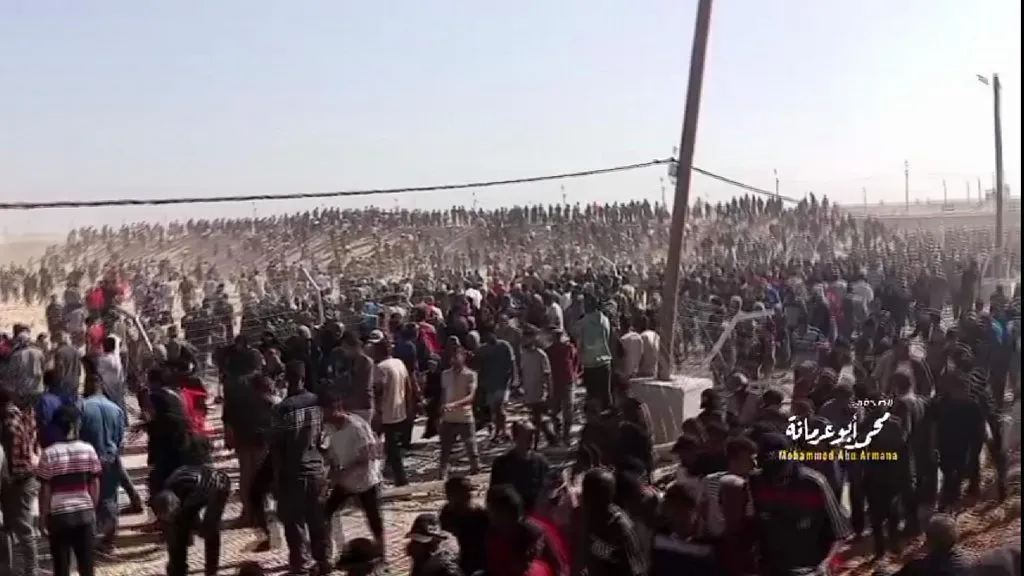In a scene that reflects the deepening humanitarian crisis in the Gaza Strip, aid distribution centers once meant to be havens of hope and survival have turned into arenas of chaos and armed conflict. With the intensifying blockade and the acute shortage of food and medical supplies, these centers are no longer safe spaces. Instead, they have become flashpoints for tension and social collapse, amid the near total inability of local authorities to impose order or provide adequate protection for civilians.
Many aid centers in the northern and central parts of the Strip witness massive daily overcrowding, as thousands of civilians gather in search of their daily sustenance amid severe shortages of bread, water, and basic necessities. This crowding often escalates into clashes among civilians, which quickly develop into fights involving sticks and light firearms driven by anger, psychological breakdown, or the intervention of armed groups seeking to assert control and direct aid toward those they deem more "deserving" or loyal.
Human rights reports and firsthand accounts indicate that some armed factions effectively control the aid and redistribute it in ways that deepen division and chaos. In many cases, gunfire is used to disperse crowds or to assert control over convoys arriving from border crossings. In recent weeks, several injuries some fatal have been reported during outbreaks of violence near distribution centers or during the transportation of aid to its recipients.
In this grim reality, the suffering of innocent civilians stands out especially women, children, and the elderly who face daily risks of being crushed, injured, or even killed in their desperate attempts to obtain a sack of flour or a bottle of cooking oil. These centers have become magnets for the desperate and hopeless, creating fertile ground for chaos in the absence of law and the shrinking capacity of international relief agencies to operate freely and safely.
Despite repeated international calls for calm and the establishment of safe humanitarian corridors, the world remains powerless to halt the collapse. With each passing day without a political solution or decisive intervention to ensure protection, these distribution centers shift from symbols of hope to painful markers of the deep, unhealed Palestinian wound—amid the world's silence and helplessness.
